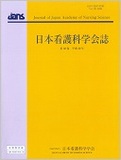Japanese
English
- 販売していません
- Abstract 文献概要
- 参考文献 Reference
要旨
目的:本研究では福島第一原子力発電所の事故を契機とした母子避難を継続する母親を支えている避難先地域の資源や人々との関わりを取り上げ,そのプロセスを明らかにする.
方法:母子避難を継続する母親12名を研究協力者として,半構造化面接で得たデータを修正版グラウンデッド・セオリー・アプローチにより分析した.
結果:母子避難を継続する母親は【被災者として(避難先)地域に馴染み】ながら,避難生活の中で【健康影響リスク回避の実感】をし,避難先地域の人々との【心地よい人間関係を構築】することができていた.このことが【母子避難という選択への納得】に繋がり,母子避難が継続されていた.
結論:母子避難を継続する母親への看護援助には,母親との放射線被ばくリスクコミュニケーションを行うこと,また避難先地域に馴染むことや人間関係の構築を支援すること,そして母子避難という選択への納得を支持する関わりが重要であることが示唆された.
Aim: To reveal the interaction process of sustained evacuation region with mother and children from Fukushima Daiichi Nuclear Power Plant accident.
Method: Semi-structured interviews were conducted with 12 mothers who had evacuated with their children to an area not affected by the great East Japan earthquake. Data were analyzed using The Modified Grounded Theory Approach.
Results: The process of comprised 12 concepts and four categories: “Fit to evacuation region as an evacuee,” “Real feeling for avoidance of health risks,” “Relationship is comfortable,” and “Satisfied with self-selection.”
Conclusion: To support mother and child evacuees, it is important to conduct risk communication of radiation health effects that understands the mother's anxiety. It is also important to support the construction of human relations in the evacuation region. Additionally, it was suggested that communication and built a trust relationship for respect to their make a choice are also critical.
Copyright © 2018, Japan Academy of Nursing Science. All rights reserved.


